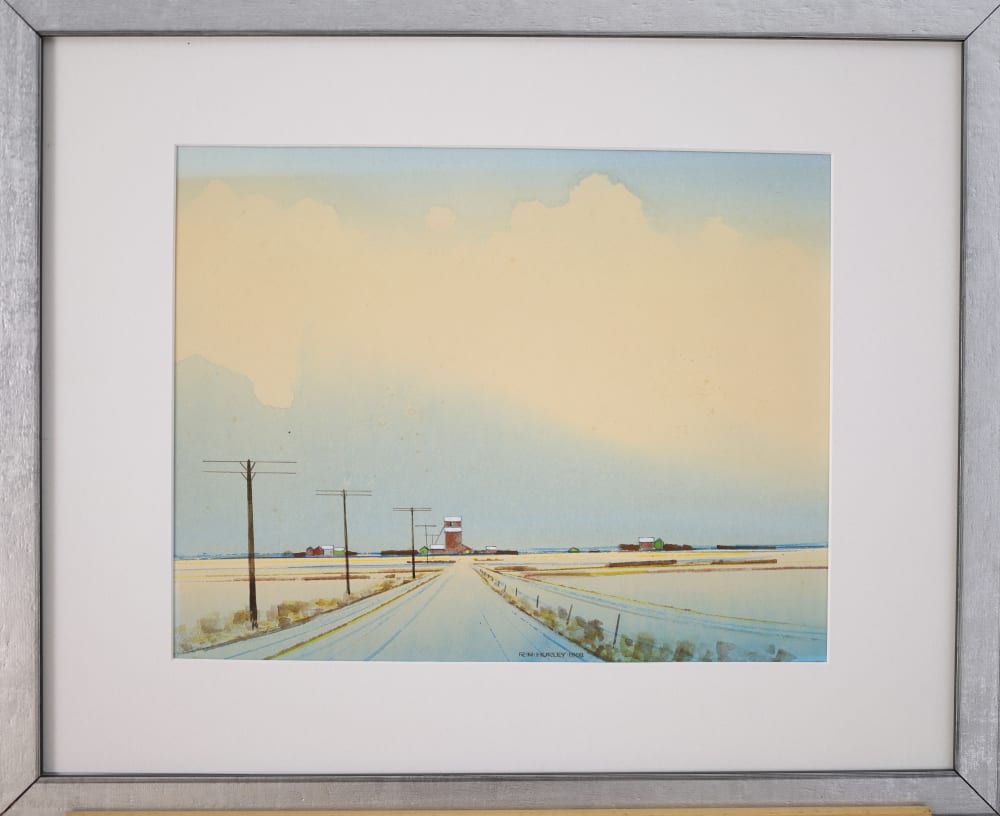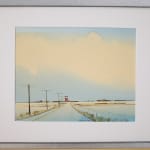Robert Newton Hurley English-Canadian, 1894-1980
protected by museum glass
Further images
This is a watercolour painting entitled Grain Elevator by Robert Newton Hurley. It features a vast, open landscape dominated by a flat horizon under a wide sky. The scene is characterized by its minimalistic approach, conveying the vastness and isolation of the prairie lands.
In the foreground, two parallel roads or paths stretch straight into the distance, converging at a point on the horizon, a classic example of one-point perspective that draws the viewer's eye into the depth of the painting. Alongside the road, utility poles stand at regular intervals, adding to the perspective and sense of distance. The roads are bordered by thin lines of water or wetlands, reflecting a hint of the sky's color and contributing to the flatness of the terrain.
Central to the composition, in the middle distance, is the titular grain elevator, a structure typical of the Canadian prairies, painted in red and white, serving as a focal point amidst the otherwise sparse landscape. Additional outbuildings or farm structures, small and rendered in simple shapes and muted colors, are scattered around the grain elevator.
The sky is a vast expanse with soft clouds brushing against a gradient of pale blues and yellows, suggesting either dawn or dusk's gentle light. The artist's name, "R.N. Hurley", is inscribed in the lower right corner, providing authenticity to the piece.
The painting captures the essence of the prairie's open space and the economic and cultural significance of the grain elevator within this environment. The use of light and color, along with the careful composition, evokes a sense of quiet and the passage of time in a rural setting.






